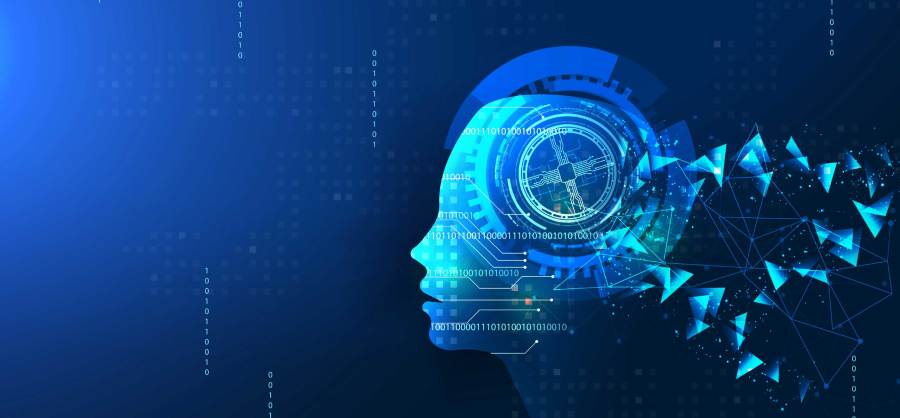Rapid advancements in the commercialisation and use of artificial intelligence (AI) are transforming traditional models of content production. From writing songs, poetry, and novels, to designing buildings, art and graphics, AI is unlocking greater efficiencies for users.
However, the application of intellectual property laws, in particular copyright principles, to the creation and use of AI-generated works raises nuanced questions of copyright ownership and infringement. This article explores these questions in relation to the use of AI in generating written and artistic outputs.
How does the technology work?
There are numerous artificial intelligence models available to produce content, the most well-known of which are ChatGPT - an AI-powered large language model, or chatbot, that can respond in a conversational style to users in response to a prompt; and DALL-E 2, which can generate digital images and art from a description or prompt.
These AI models are trained on vast amounts of written and/or (pixilated) visual data, informing their algorithms and enabling them to comprehend text inputs or prompts to which to generate an appropriate response. This training involves "feeding" the AI models a range of pre-existing material including articles, books, and other written works, as well as images, including photographs and artwork by a range of authors.
The use of such training materials to generate written and artistic outputs raises questions about the subsistence and ownership of copyright, copyright infringement, and the protection of AI-generated works, with important implications for companies that develop the technology, commercial users of AI and, of course, the copyright owners of the original works.
Can copyright subsist in AI-generated works?
In Australia and other common law jurisdictions such as the UK and New Zealand, copyright arises automatically upon the creation of a work in which copyright is capable of subsisting. There is no need to formally apply for or register a work for copyright to subsist, and no system of registration exists.
Under the Australian Copyright Act 1968 (Cth) (Copyright Act) for copyright to subsist in the work, the user must establish that:
- the work is original; and
- they are an author of the work.
Originality
The courts have endorsed various formulations of the test for originality over the years with the common threads being the requirement for at least a nominal degree of ingenuity and sufficient intellectual effort that is apparent in the creation of the work itself. Where works are created from a pre-existing corpus of data, originality may be in question. Even where ingenuity and intellectual effort are present in the creation of an AI-generated work, the concept of authorship must still be established.
Satisfying authorship and ownership
Under the Copyright Act, subject to certain exceptions, the author of a literary, dramatic, musical or artistic work becomes the first owner of copyright in that work. The question then is 'who' is the author of output generated by AI in response to input from a human?
Under current law, copyright works must be created by human authors or qualified persons under the Act. Under these conditions, copyright cannot subsist in works created by ChatGPT or DALL-E 2. Section 32 of the Act provides that copyright subsists in original works that are unpublished and of which the author was a qualified person at the time when the work was made. A "qualified person" means an Australian citizen or a person that is resident in Australia, and "author" in the copyright context has been held to mean a human author1.
Commercial considerations
Contractual overlays are another important consideration when assessing the subsistence of copyright in relation to AI-generated content. OpenAI, which owns both ChatGPT and DALL-E 2, has attempted to deal with this by purporting to transfer OpenAI's rights, title, and interest in and to the generated content as part of the products' terms of use if the outputs are unique. However, it is not possible to know whether the same or similar outputs have been generated for other users without a register of IP ownership.
Moreover, any transfer of ownership is likely ineffective with respect to copyright in Australia because the lack of a human author means copyright in the work never arose. In addition, language models are often trained to respond in the same way to the same inputs, or in a similar way to similar inputs, in which case, the likelihood of a party 'owning' intellectual property rights in 'unique' content, further reduces. OpenAI's terms of use also imply that the company has the right to transfer ownership of the outputs generated from its corpus of data, which, if it has not acquired licences from the owners (including the rights to reproduce, communicate and adapt their works), may involve an infringement of copyright in those works.
Sufficient user input
As established, copyright subsistence in an AI generated work requires the user who directed the creation of the work to establish that the work is original and that they are a human author of the work. Whether this occurs in the case of an output from ChatGPT or DALL-E 2 would likely depend upon whether the user had a sufficient role in directing and creating the material form of the work and contributed sufficient independent intellectual effort to the work. It would also depend on the AI's data sources being free of intellectual property rights belonging to other owners.
In most cases, users' inputs or prompts are unlikely to meet this threshold. However, there may be a limited number of cases where the input or prompt given to the AI model is detailed enough that the threshold is met. For example, if ChatGPT is used by an author to summarise that author's original literary work, it is possible - though by no means certain - that the summary could attract copyright protection or itself be a derivative work of the author's original work.
Can AI generated works infringe the copyright of third parties?
The proliferation and popularisation of AI like DALL-E 2 has led to backlash from visual artists who argue that the use of their images (such as photographs and digital copies of their artworks) in AI training constitutes infringement of their copyright in those works. They also assert that AI can mimic the style and output of a particular creator if directed to do so, which could also impinge upon the rights of the original authors of both visual and literary works.
Importantly, the infringement provisions in the Copyright Act refer to infringement by a "person". Section 2C(1) of the Acts Interpretation Act 1901 (Cth) provides that a person includes a body politic or corporate, as well as an individual. This suggests it is not possible for an AI model such as ChatGPT or DALL-E 2 to commit infringement although its corporate creator, OpenAI, might. As far as the technology itself goes, AI models do not have legal personality under Australian law (yet) and cannot own assets. Therefore, there is little commercial benefit in bringing proceedings against an AI.
However, it is possible that the person who uses copyright works to train an AI system may be held responsible for reproducing each copyright work in digital form to train the AI model.
Assuming this issue was agitated in the Australian courts, OpenAI may seek to argue, among other things, that the training constitutes fair dealing of the copyright work for research or study under section 40(1) of the Copyright Act, being an exception to copyright infringement. However, as the courts have historically favoured a very narrow interpretation of what constitutes "research or study", such an argument is unlikely to succeed.
Infringement by users
Establishing infringement in relation to the outputs of an AI would require a copyright owner to prove that the user who orchestrated the AI's output has taken "substantial part" of their original work.
In the artistic context, distinguishing between imitation/flattery and infringement is especially difficult, with infringement being difficult to prove if the similarity of an allegedly infringing work does not go beyond the use of similar style, colour, subject matter or technique without a substantial reproduction of an original work .
For example, if a user asks DALL-E 2 to recreate an existing artwork by Ben Quilty (an Australian artist) and make minor changes to that work, arguably the user is playing a much more active role in the creation of the work and infringement may therefore be more readily identifiable. By way of contrast, if the user asks DALL-E 2 to create a picture of a house, in the artistic style of Ben Quilty, it is unlikely any infringement would occur. Note that while a causal connection between the infringement and the copyright work is also required, the courts may be willing to draw that inference if the substantiality requirement is satisfied.
Commercial use
Users intending to use the outputs of AI models for commercial purposes (such as the publication of a book or the sale of digital artworks) may also have good reason to be wary of situations in which they enter a relatively generic prompt, but the work generated by ChatGPT or DALL-E 2 happens to take a substantial part of an original work in which copyright subsists.
In such circumstances, a user accused of infringement would be unable to rely on independent creation as they are unlikely to have contributed sufficient independent intellectual effort to the work. They are also unlikely to be able to rely on innocent infringement as the defence requires that the alleged infringer provide evidence of the enquiries they made to confirm that their use of the work would not infringe the copyright of another party.
For assistance with intellectual property matters, please contact Scott Traeger for enforcement and contentious matter and Robert Neely for advisory, strategy and non-contentious matters.
1 In Telstra Corporation Limited v Phone Directories Company Pty Ltd [2010] FCAFC 149, the Court considered whether copyright subsisted in phone directories that were compiled by computer systems. The Court held that copyright did not subsist in phone directories as the directories were not compiled by individuals (who were engaged to instead facilitate the process), and the directories were created by a "a computerised process of storing, selecting, ordering and arranging the data to produce the directories in the form that they were published."
All information on this site is of a general nature only and is not intended to be relied upon as, nor to be a substitute for, specific legal professional advice. No responsibility for the loss occasioned to any person acting on or refraining from action as a result of any material published can be accepted. Lander & Rogers is furthermore committed to providing legal advice and content that is factual, true, practical and understandable. Learn more about our editorial policy.
 Client portal
Client portal












